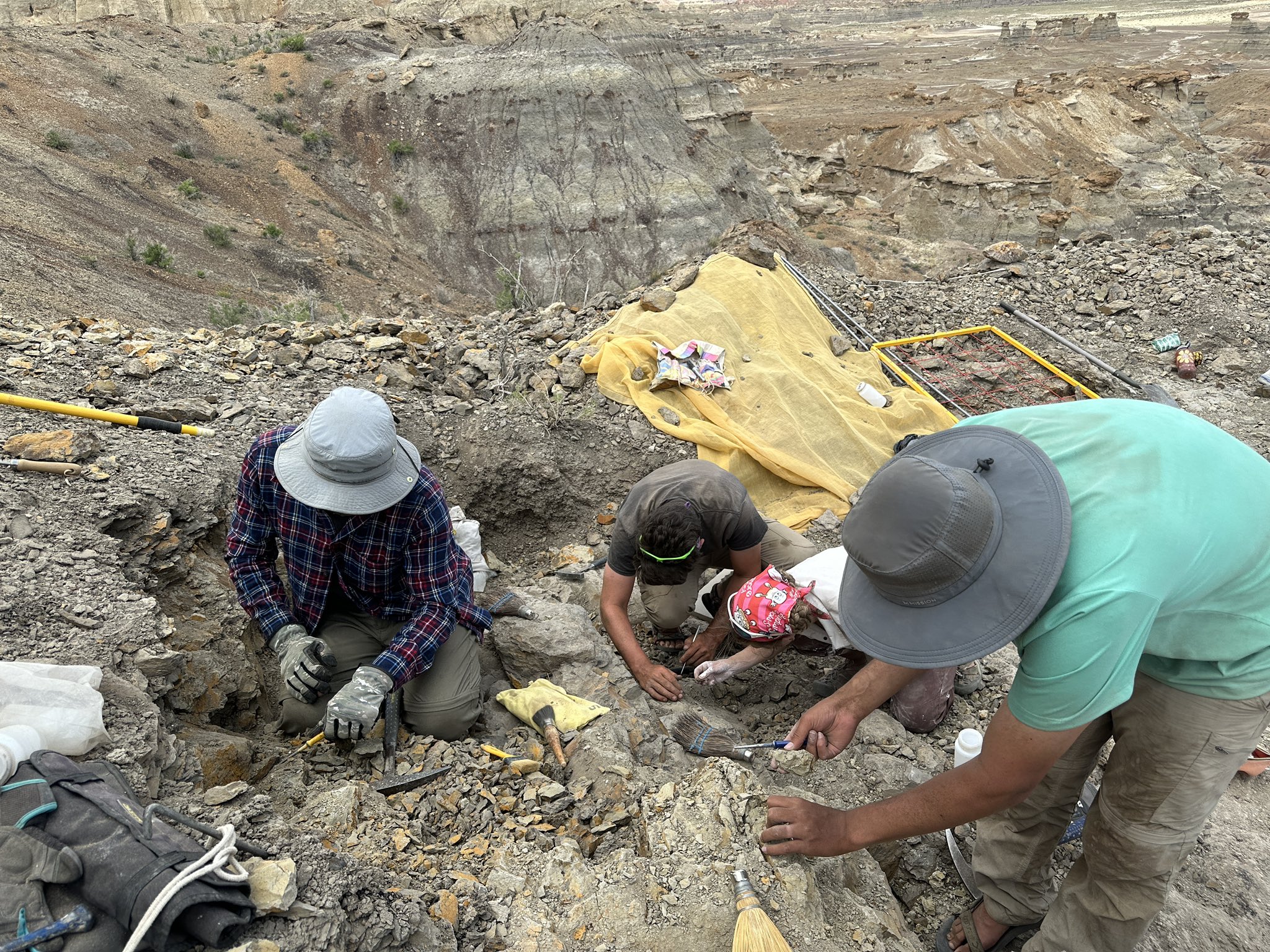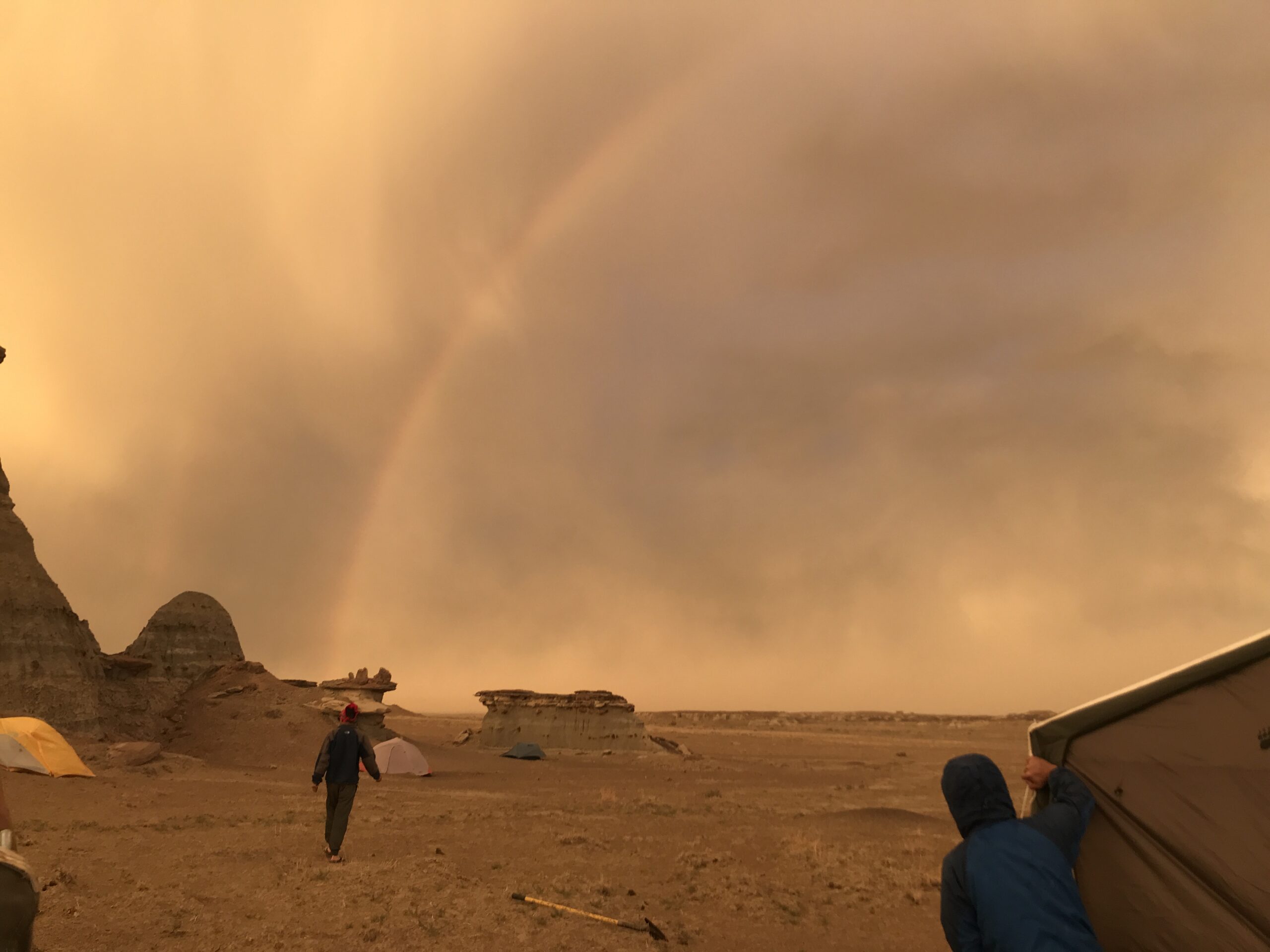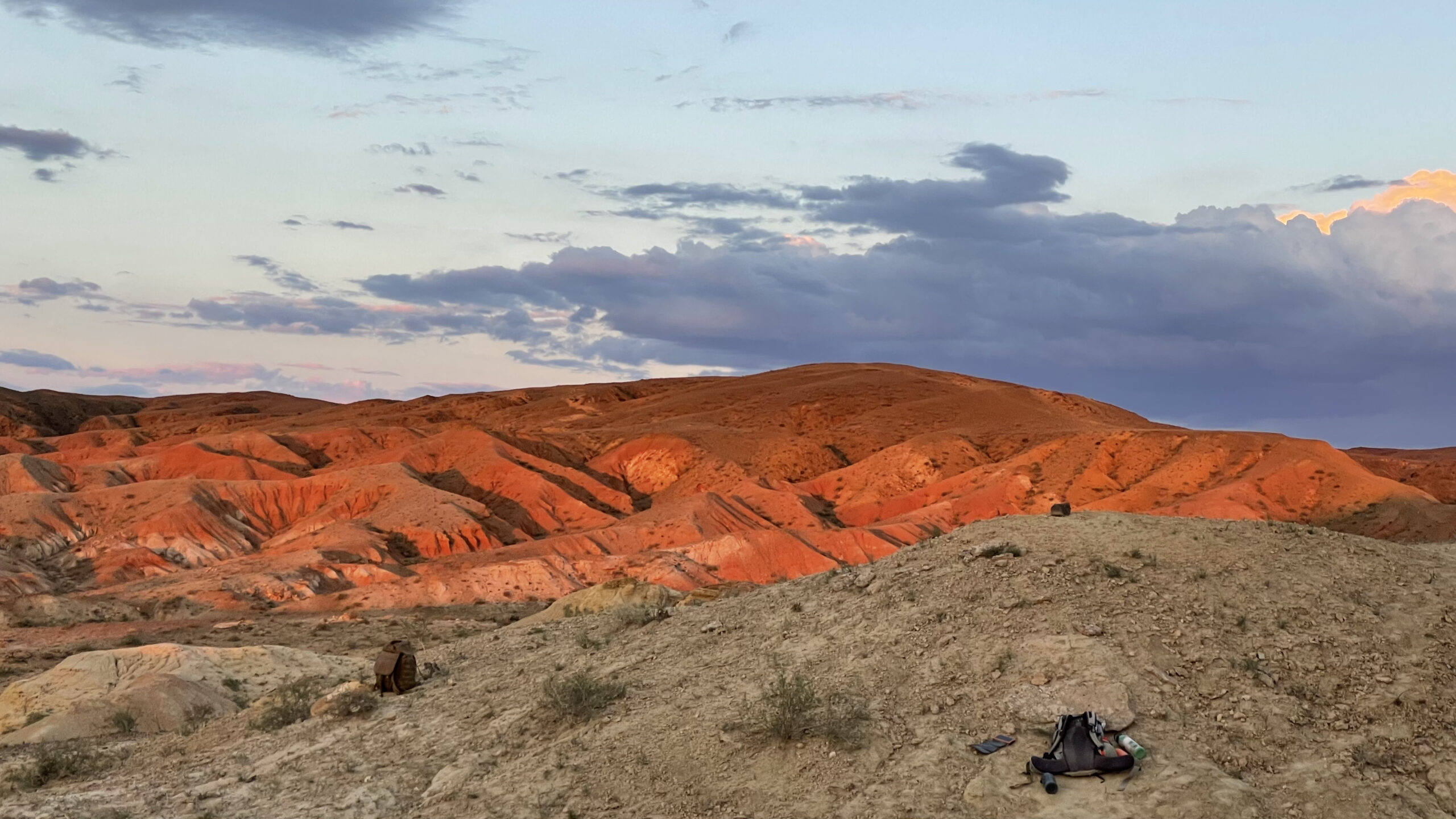One of the greatest aspects of being a paleontologist is having the good fortune of spending time outside, often in stunning surroundings, literally digging up our new research! I have been lucky enough to have participated in field work across three continents with a wide array of colleagues and collaborators looking for a whole host of new specimens. There’s nothing quite like the hikes, the digging, squinting with a fine-tooth comb on your hands and knees, plastering new discoveries with burlap strips, and sitting round camp with good food and good friends!
Mongolia (2023)
In 2023, I with other members of the North Carolina Museum of Natural Sciences (NCMNS) joined the Mongolian-American Dinosaur Expedition (MADEx) crew with IP-MAS (Ulaanbaatar, Mongolia) and Stellenbosch University (South Africa). We prospected and quarried areas of the eastern Gobi desert, including the Bayanshiree and Khuhteeg Formations. We were searching of mid-Cretaceous dinosaurs (and eggs!), as part of the larger project comparing and connecting the Asian and North American fauna, paleoenvironments, and paleoclimates of this crucial time period. The areas being scouted are almost entirely new, so stay tuned in the future for new species and spectacular finds!
Utah (2020-)

Since beginning my PhD, I have been heavily involved in the fieldwork program exploring the beautiful and bountiful Cedar Mountain Formation of central Utah. Specifically, we have been focussed on the increasingly diverse Mussentuchit Member, the Cenomanian-age home of recent dinosaur discoveries such as Siats meekerorum, Moros intrepidus, Fona herzogae, and Iani smithi, with many more yet undescribed species still to come! There are also bountiful microfossil assemblages and multiple spectacular ash horizons that provide exquisite chronostratigraphic resolution. Crucially for my research, this is also the site of the spectacular nest of Macroelongatoolithus, a one-of-a-kind fossil in North America, and thousands of fragments of fossil eggshell I studied during my PhD. I have also worked at the Valanginian-age Crystal Geyser Quarry, an enormous monospecific bonebed of the therizinosaur Falcarius utahensis, where temperatures have exceeded 125 degrees Fahrenheit in the day and remain over 100 at night!
New Mexico (2020-)

Concurrent to work undertaken in Utah, the NCMNS crew has repeatedly been to two locations in New Mexico: the Turonian-age Moreno Hill Formation in the west of the state and the Santonian- to Campanian-age Menefee Formation in the north west. These localities provide some of the toughest terrain and gnarliest sandstorms of any field site, but you are rewarded with stunning sunsets and views over the badlands! These sites have yielded diverse species of dinosaur such as Dynamoterror, Invinctarx, Ornatops, Menefeeceratops (Menefee Fm.), and Jeyawati, Nothronykus, Suskityrannus, and Zuniceratops (Moreno Hill Fm.). The Menefee Formation gave me my first helicopter lift experience, as we moved nearly 4,000 lbs of new dinosaur from its quarry directly into the back of our pick-up truck with a long-line
Scotland (2018)

My first experience with a paleontological field crew was on the beautiful Isle of Skye on Scotland’s west coast, where I had done geological mapping as an undergraduate a few years before. This time I was invited to the University of Edinburgh’s summer excursion. Easily the wettest and coldest of the field expeditions, this also offered a different perspective on fieldwork, with the finds here dominated by ichnological fossils (predominantly footprints) from the Bathonian-age Lealt Shale Formation, along rugged coastlines and rocky shores. Locomotory traces for all major dinosaur clades have been found here, and recently the first body fossils with the discovery of the pterosaur Dearc sgiathanch.
